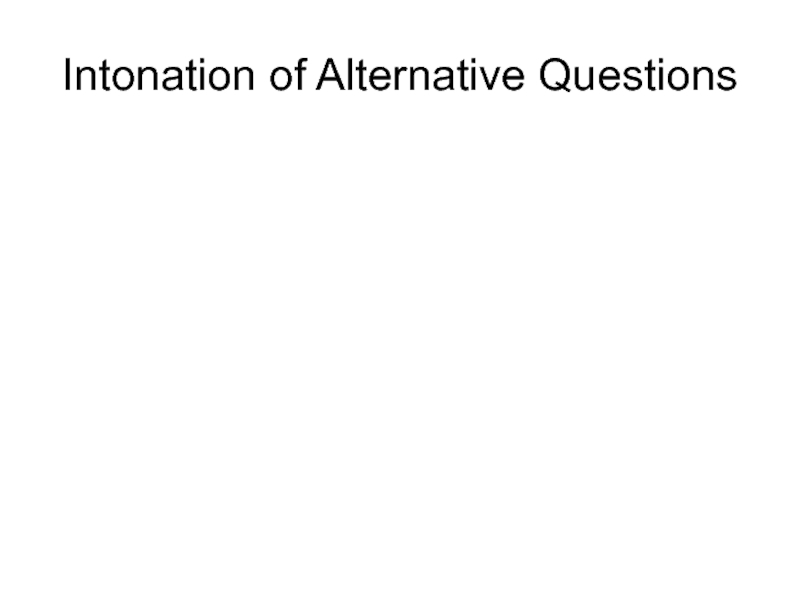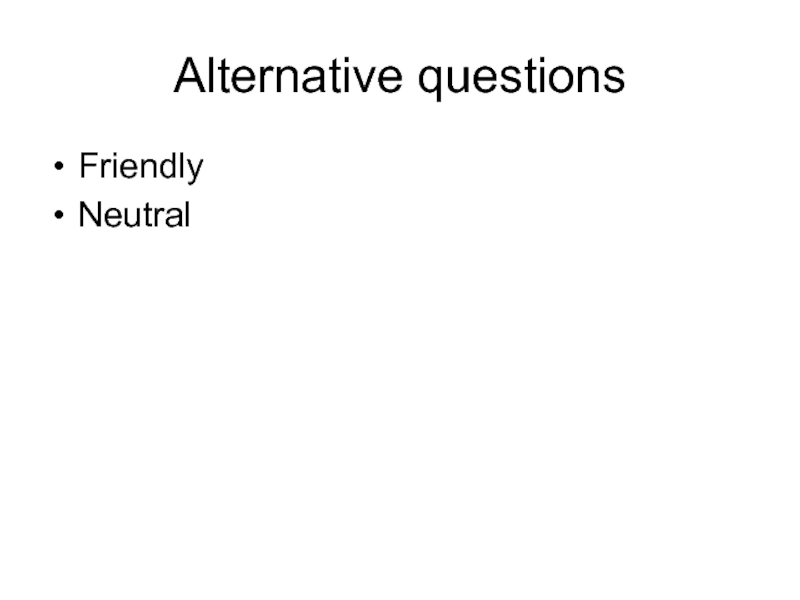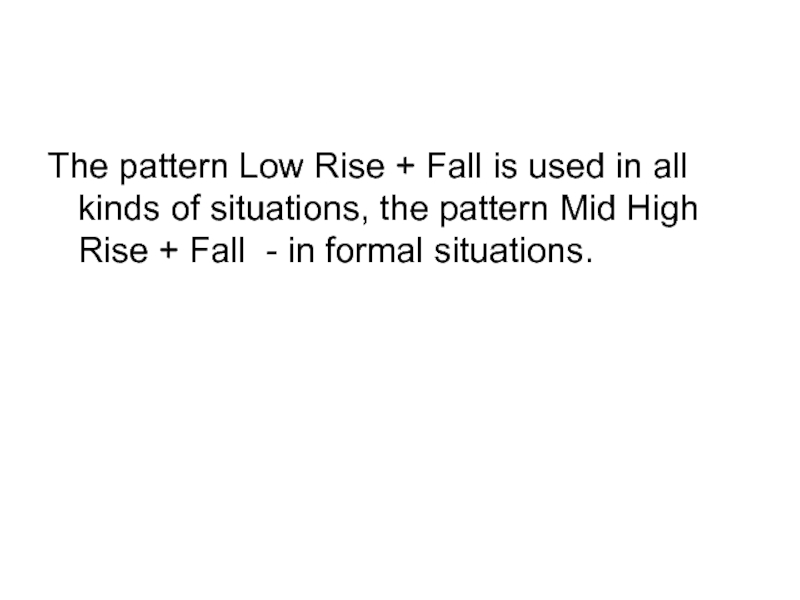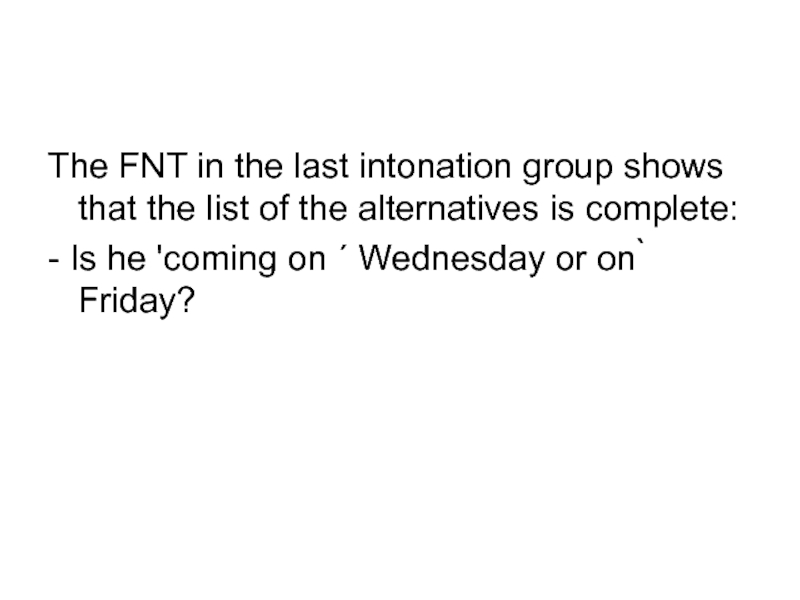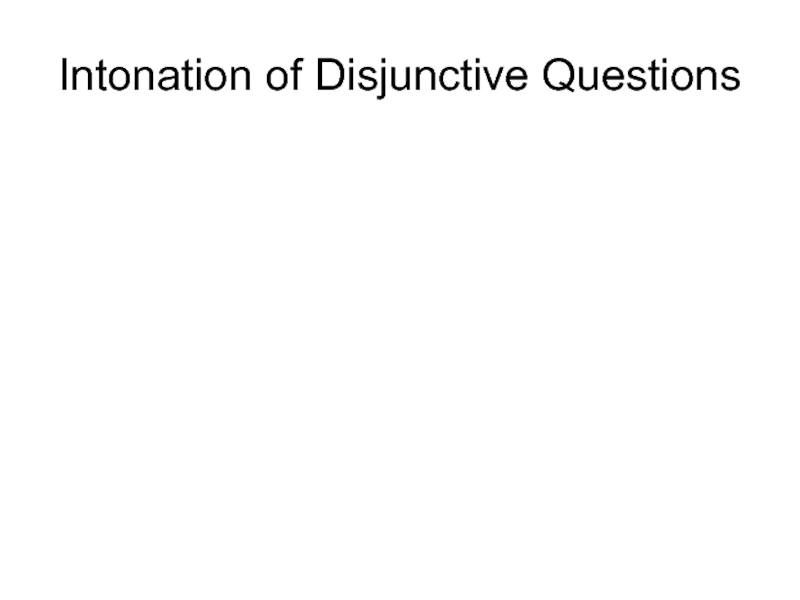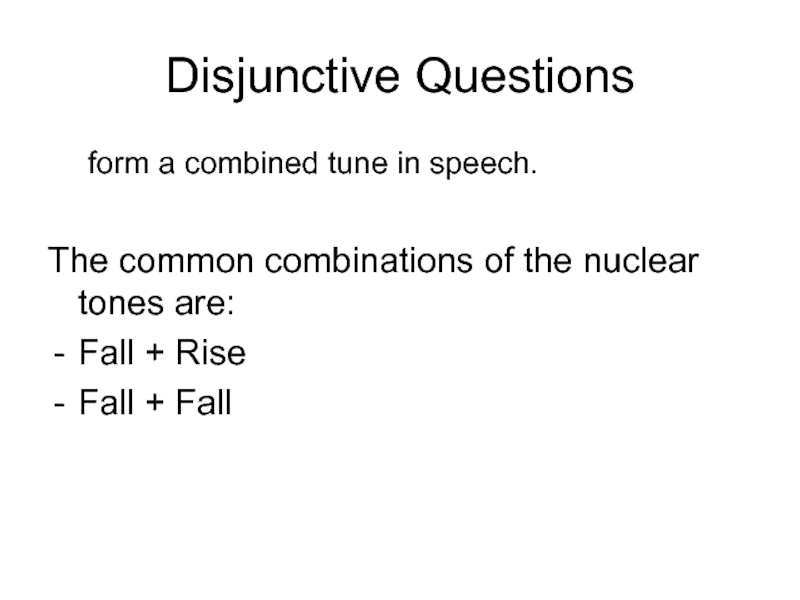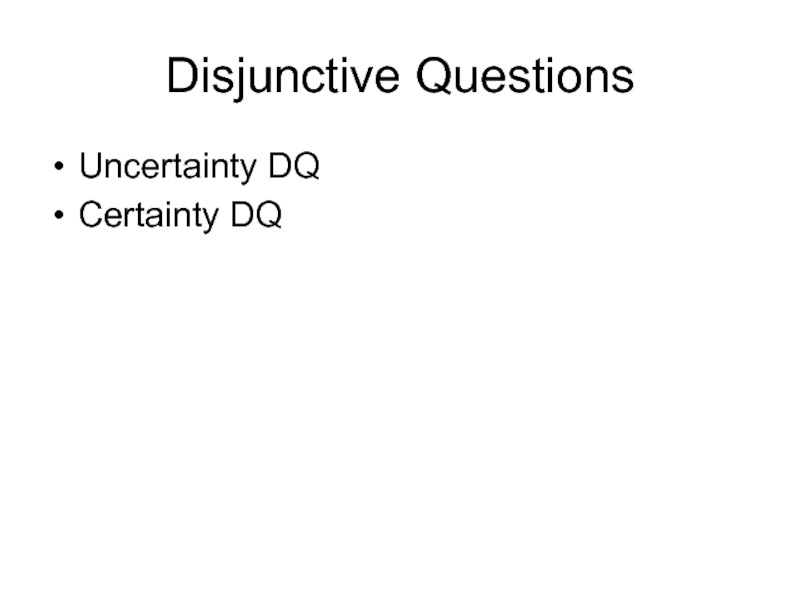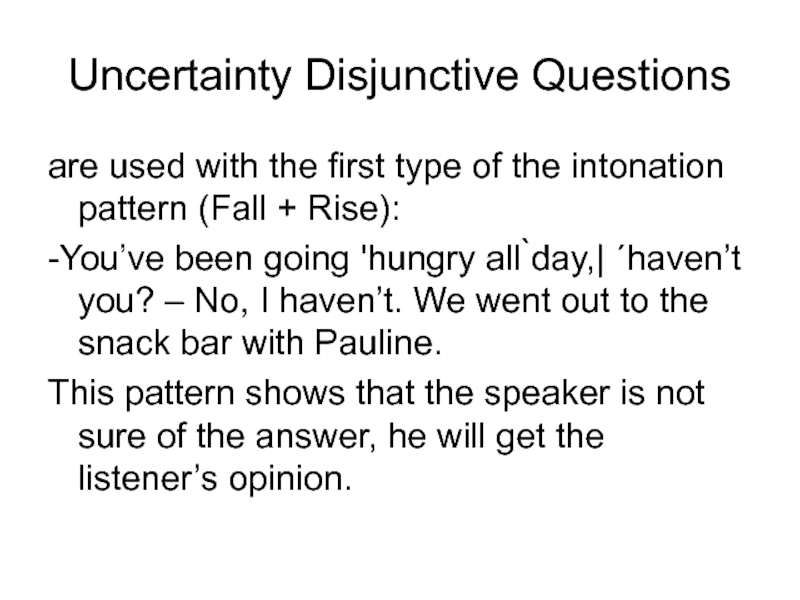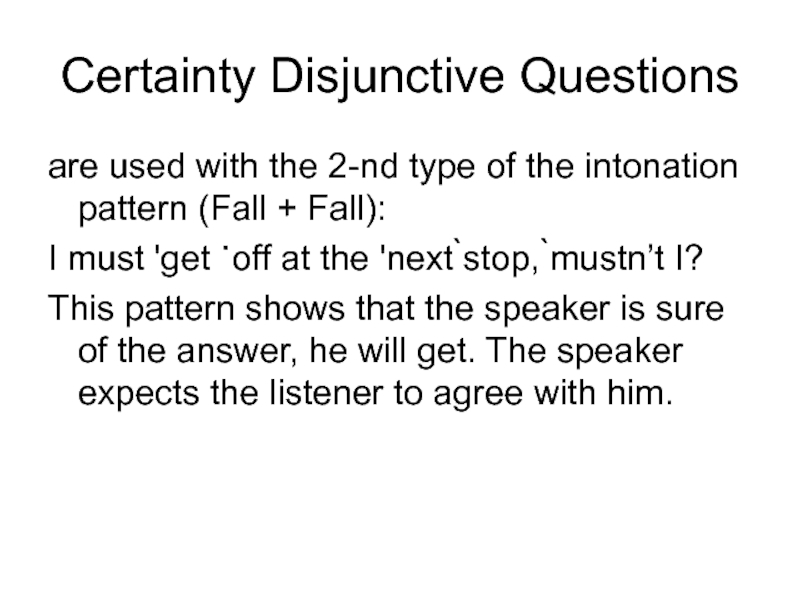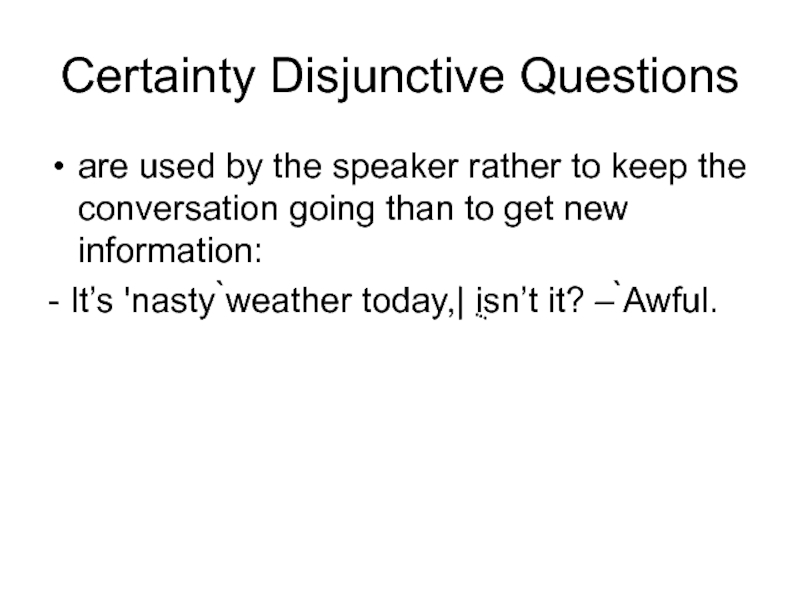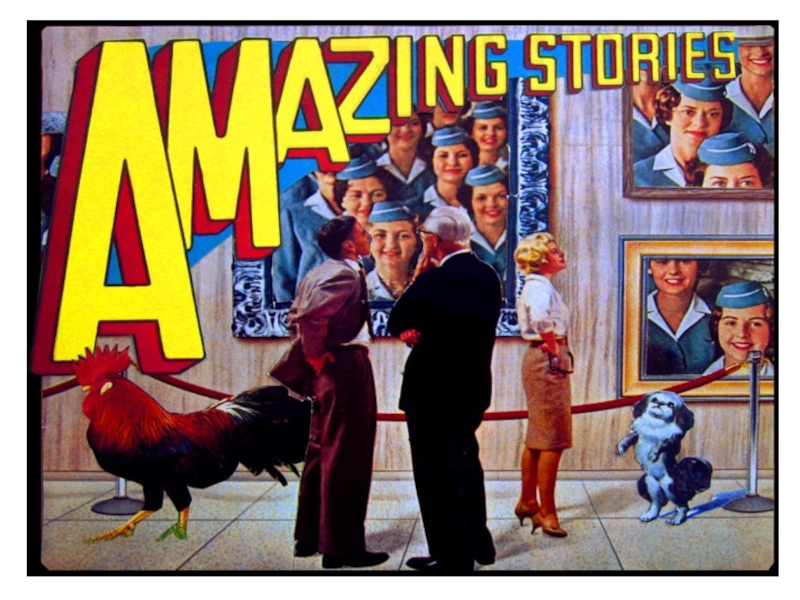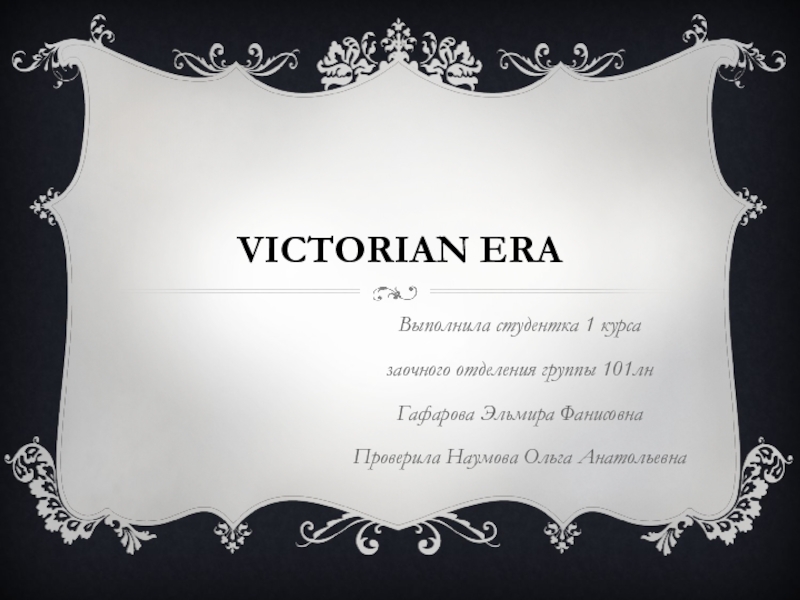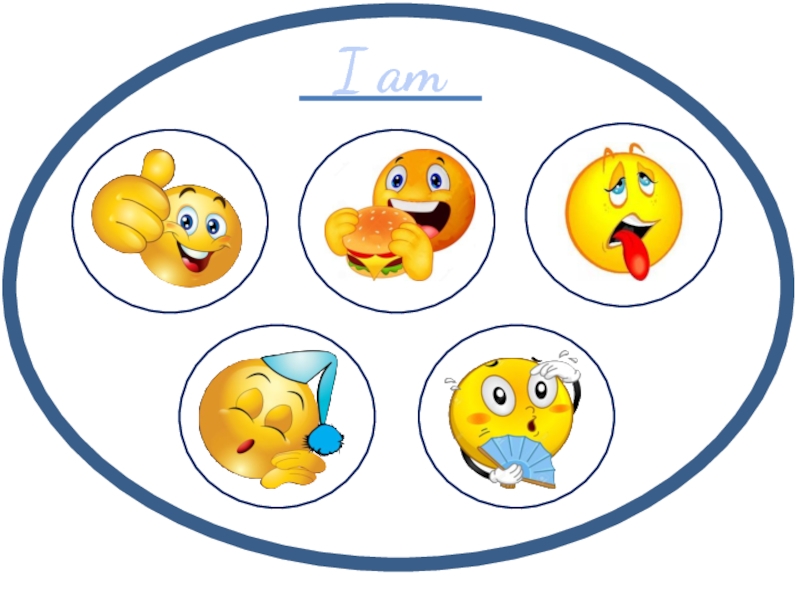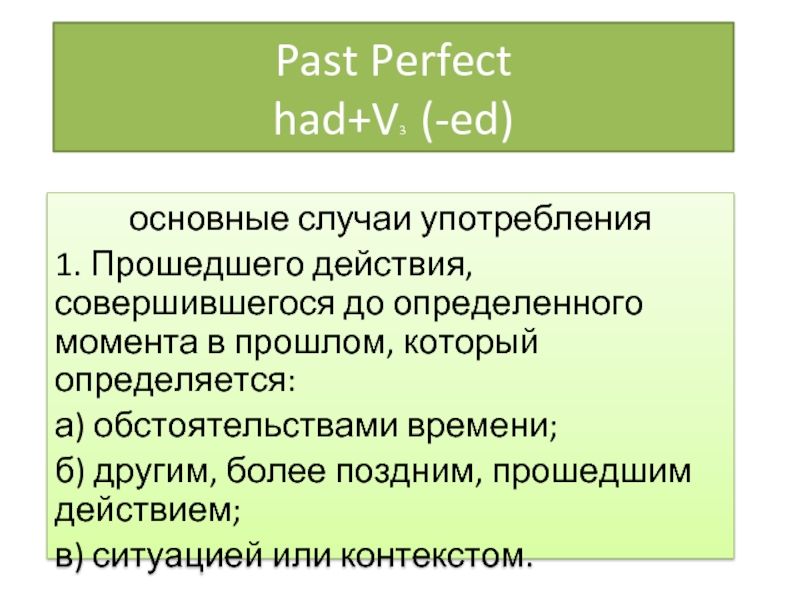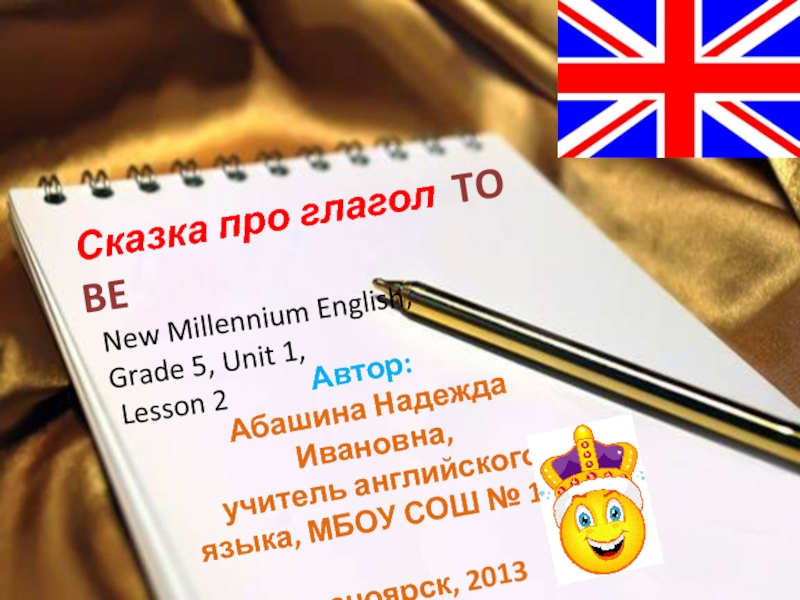- Главная
- Разное
- Дизайн
- Бизнес и предпринимательство
- Аналитика
- Образование
- Развлечения
- Красота и здоровье
- Финансы
- Государство
- Путешествия
- Спорт
- Недвижимость
- Армия
- Графика
- Культурология
- Еда и кулинария
- Лингвистика
- Английский язык
- Астрономия
- Алгебра
- Биология
- География
- Детские презентации
- Информатика
- История
- Литература
- Маркетинг
- Математика
- Медицина
- Менеджмент
- Музыка
- МХК
- Немецкий язык
- ОБЖ
- Обществознание
- Окружающий мир
- Педагогика
- Русский язык
- Технология
- Физика
- Философия
- Химия
- Шаблоны, картинки для презентаций
- Экология
- Экономика
- Юриспруденция
Intonation of Alternative Questions презентация
Содержание
- 1. Intonation of Alternative Questions
- 2. Alternative questions Friendly Neutral
- 3. Alternative questions form a combined tune in
- 4. The pattern Low Rise + Fall
- 5. The FNT in the last intonation
- 6. When the list of the alternatives
- 7. A negative reply is to an
- 8. Intonation of Disjunctive Questions
- 9. Disjunctive Questions form a combined tune in
- 10. Disjunctive Questions Uncertainty DQ Certainty DQ
- 11. Uncertainty Disjunctive Questions are used with the
- 12. Certainty Disjunctive Questions are used with the
- 13. Certainty Disjunctive Questions are used by the
Слайд 3Alternative questions
form a combined tune in speech.
The common combinations of the
nuclear tones are:
Low Rise + Fall
Mid High Rise + Fall
L Rise \ M -H Rise + L Rise \ M -H Rise
Low Rise + Fall
Mid High Rise + Fall
L Rise \ M -H Rise + L Rise \ M -H Rise
Слайд 4
The pattern Low Rise + Fall is used in all kinds
of situations, the pattern Mid High Rise + Fall - in formal situations.
Слайд 5
The FNT in the last intonation group shows that the list
of the alternatives is complete:
- Is he 'coming on ´ Wednesday or on ̀Friday?
- Is he 'coming on ´ Wednesday or on ̀Friday?
Слайд 6
When the list of the alternatives is incomplete the pattern L
Rise \ M -H Rise + L Rise \ M -H Rise is used:
- 'Can she ˙play the ِ piano | or the ِ violin?
- 'Can she ˙play the ِ piano | or the ِ violin?
Слайд 7
A negative reply is to an alternative question with an incomplete
list of choices is “No”:
'Will you have some ´juice or ´soda-water?
ֽNo, ِ thank you. I’ve 'just had some ̀tea.
'Will you have some ´juice or ´soda-water?
ֽNo, ِ thank you. I’ve 'just had some ̀tea.
Слайд 9Disjunctive Questions
form a combined tune in speech.
The common combinations of the
nuclear tones are:
Fall + Rise
Fall + Fall
Fall + Rise
Fall + Fall
Слайд 11Uncertainty Disjunctive Questions
are used with the first type of the intonation
pattern (Fall + Rise):
-You’ve been going 'hungry all ̀day,| ´haven’t you? – No, I haven’t. We went out to the snack bar with Pauline.
This pattern shows that the speaker is not sure of the answer, he will get the listener’s opinion.
-You’ve been going 'hungry all ̀day,| ´haven’t you? – No, I haven’t. We went out to the snack bar with Pauline.
This pattern shows that the speaker is not sure of the answer, he will get the listener’s opinion.
Слайд 12Certainty Disjunctive Questions
are used with the 2-nd type of the intonation
pattern (Fall + Fall):
I must 'get ˙off at the 'next ̀stop, ̀mustn’t I?
This pattern shows that the speaker is sure of the answer, he will get. The speaker expects the listener to agree with him.
I must 'get ˙off at the 'next ̀stop, ̀mustn’t I?
This pattern shows that the speaker is sure of the answer, he will get. The speaker expects the listener to agree with him.
Слайд 13Certainty Disjunctive Questions
are used by the speaker rather to keep the
conversation going than to get new information:
- It’s 'nasty ̀weather today,| ֻisn’t it? – ̀Awful.
- It’s 'nasty ̀weather today,| ֻisn’t it? – ̀Awful.
